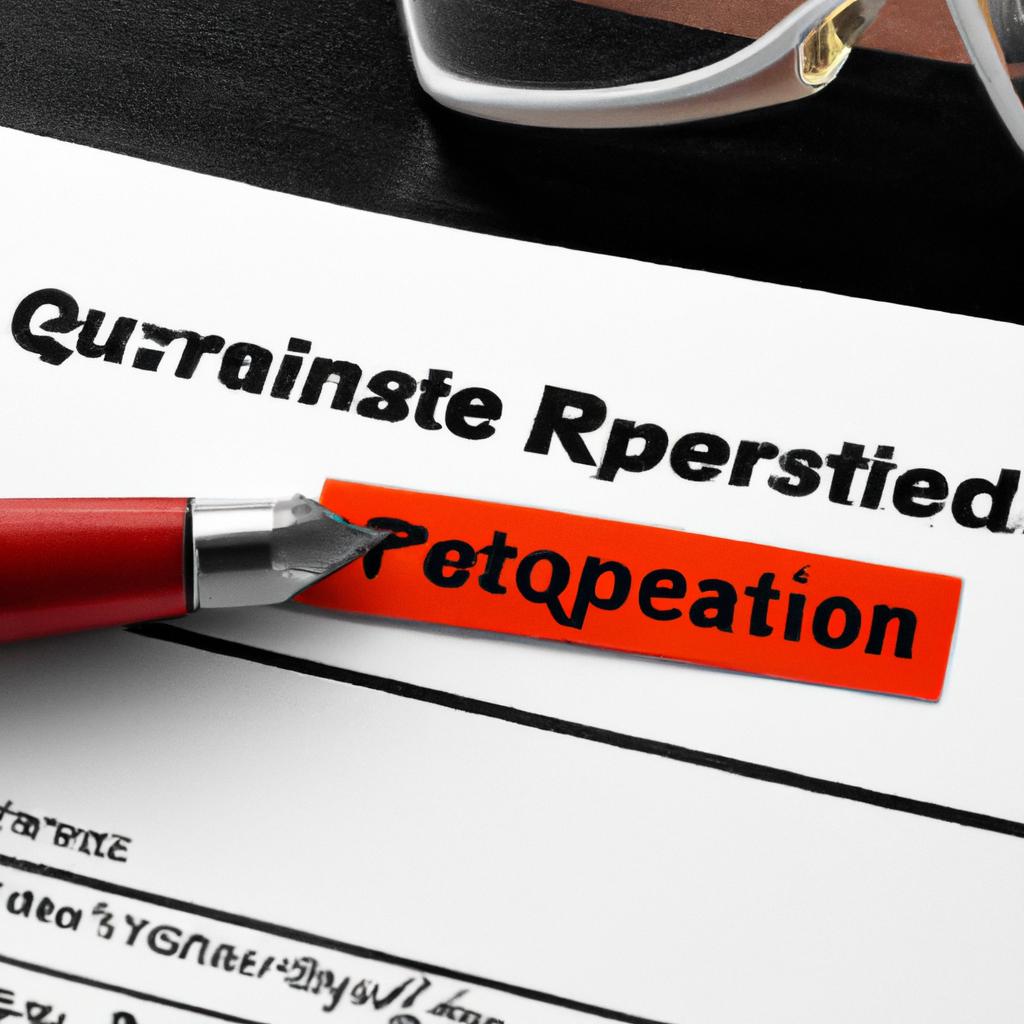Facing the loss of a spouse is undoubtedly a difficult and emotional time. As an experienced estate planning attorney at Morgan Legal Group in New York City, we understand the complexities that can arise when it comes to changing the deed on a house after the death of a spouse. In this article, we will provide you with expert guidance on navigating this process with ease and ensuring that the transfer of property ownership is properly executed in accordance with the law. Let us help you safeguard your financial future and protect your loved one’s legacy.
Updating Ownership Title of Real Property Following Spouse’s Passing
Changing the ownership title of real property after the passing of a spouse can be a complex process, but with the right guidance, it can be done smoothly and effectively. To update the deed on a house following the death of a spouse, it is important to understand the necessary steps involved.
First, it is crucial to gather all relevant documents, including the death certificate of the deceased spouse and the original deed to the property. Next, consult with an experienced estate planning attorney who can guide you through the legal requirements and procedures for transferring ownership. Remember, each state may have different laws regarding property ownership transfer, so seeking professional legal advice is essential. Ultimately, with proper planning and legal assistance, updating the ownership title of real property following the passing of a spouse can be resolved efficiently.
Navigating the Probate Process to Transfer Deed of Property
Transferring the deed of a property after the death of a spouse can be a complex and emotional process. Navigating the probate process in order to change the deed on a house requires careful attention to detail and adherence to the laws governing property ownership. Here are some key steps to consider when transferring the deed of a property:
- Review the Will: The first step in changing the deed on a house after the death of a spouse is to review the Will. The Will may specify how the property should be transferred, so it is important to follow the instructions outlined in the document.
- Probate the Estate: In most cases, the property will need to go through the probate process in order to transfer ownership. This involves filing the Will with the court, paying any outstanding debts or taxes, and obtaining a court order to transfer the property to the designated heirs.
- Update the Deed: Once the probate process is complete, the deed of the property can be updated to reflect the new ownership. This may involve filing a new deed with the county clerk’s office and paying any associated fees.

Utilizing Affidavits and Small Estate Affidavits for Efficient Property Transfer
When a spouse passes away, transferring property can be a complex and emotional process. One efficient way to transfer property is by utilizing affidavits and small estate affidavits. An affidavit is a sworn statement of facts, signed under oath and witnessed by a notary. This legal document can be used to transfer real estate to the surviving spouse or heirs without the need for a lengthy probate process. By providing a clear and concise statement of ownership, an affidavit can streamline the transfer of property and avoid costly delays.
Small estate affidavits are a simplified version of affidavits that can be used to transfer real estate with a total value under a certain threshold, typically around $50,000. This streamlined process is ideal for smaller estates and can help expedite the transfer of property without the need for probate court involvement. By carefully completing the necessary paperwork and following the legal requirements, surviving spouses can efficiently change the deed on a house after the death of their loved one.

Consulting with Legal Professionals for Expert Guidance on Deed Transfer After Spouse’s Death
When it comes to transferring property deeds after the death of a spouse, it is crucial to seek expert guidance from legal professionals to navigate the complex process smoothly. Our team at Morgan Legal Group in New York City specializes in estate planning and probate law, providing the expertise needed to ensure a seamless deed transfer. Through our extensive experience in handling Wills and trusts, we can offer tailored solutions to meet your specific needs.
Consulting with our legal professionals will help you understand the legal requirements and options available for changing the deed on your house after the death of your spouse. Our team can assist you in preparing the necessary documentation, filing the appropriate paperwork, and guiding you through the steps involved in transferring ownership. Trust in our expertise to provide you with the peace of mind and assurance needed during this challenging time.
Q&A
Q: What is a deed and why is it important to update it after the death of a spouse?
A: A deed is a legal document that shows ownership of a property. It is important to update it after the death of a spouse to ensure that the correct ownership is reflected.
Q: How can I change the deed on a house after the death of my spouse?
A: To change the deed on a house after the death of a spouse, you will need to obtain a new deed that reflects the correct ownership. This can typically be done through a process called probate.
Q: What is probate and how does it relate to changing a deed?
A: Probate is the legal process of validating a deceased person’s will and distributing their assets. In the case of changing a deed after the death of a spouse, probate may be necessary to transfer ownership of the property to the surviving spouse or other beneficiaries.
Q: Are there any potential challenges or complications in changing a deed after the death of a spouse?
A: Yes, there can be potential challenges or complications in changing a deed after the death of a spouse, such as disputes over ownership, conflicting wills, or complex legal processes. It is important to seek legal advice to navigate these potential issues.
Q: How long does it typically take to change a deed after the death of a spouse?
A: The timeline for changing a deed after the death of a spouse can vary depending on the complexity of the situation and any potential challenges that arise. It is recommended to consult with a legal professional to determine the specific timeline for your situation.
Future Outlook
As you navigate the process of changing the deed on your house after the death of your spouse, remember that dealing with legal matters can be overwhelming. However, by following the necessary steps and seeking guidance from professionals, you can ensure a smooth transition of ownership. Remember, taking care of these details is not only a practical necessity but also a way to honor your loved one’s legacy. By making sure the deed reflects the rightful ownership, you are also preserving the memories and the shared history that you both created in your home. So, take your time, seek support when needed, and know that you are taking an important step towards securing your future and preserving the legacy of your dearly departed spouse.
 Title: How to Change Deed on House After Death of Spouse: A Comprehensive Guide
Title: How to Change Deed on House After Death of Spouse: A Comprehensive Guide
Losing a spouse is an incredibly difficult experience, and it comes with a lot of practical and emotional challenges. One such challenge is dealing with the legal and financial aspects of the deceased spouse’s assets, including their share in the marital home. If you have recently lost your spouse and are now facing the question of how to change the deed on your house, we understand that it can feel overwhelming and confusing. That’s why we have put together this comprehensive guide to help you understand the process and navigate it smoothly. Keep reading to learn more.
Understanding the Deed of a House
To begin with, let’s clarify what a deed is and what it represents. A deed is a legal document that represents ownership of a property. It contains the names of the owner(s), a description of the property, and any restrictions or encumbrances on the property. The most common type of deed for a house is a warranty deed, which guarantees the legitimacy of the property title and transfers ownership from the seller to the buyer.
When spouses are listed as joint owners on a deed, both of their names are included on the document, and they have equal ownership rights. This means that if one spouse passes away, the surviving spouse automatically becomes the sole owner of the property. However, it is still essential to change the deed and the title of the property to reflect this change in ownership.
The Importance of Changing the Deed After the Death of a Spouse
Changing the deed of a house after the death of a spouse is necessary for several reasons. Firstly, it ensures that the property title is updated and reflects the current ownership accurately. This can be important for future legal and financial transactions related to the property.
Secondly, it protects the surviving spouse’s rights as the sole owner of the property. Without a change in the deed, the deceased spouse’s name will remain on the document, and their legal heirs may have a claim to the property, causing complications and disputes in the future.
Lastly, changing the deed can also have financial implications. Depending on the state and the value of the property, the deceased spouse’s share may be subject to estate taxes. By changing the deed, the surviving spouse can potentially avoid or reduce these taxes.
Steps to Change the Deed of a House After the Death of a Spouse
Now that we understand the importance of changing the deed, let’s look at the steps involved in the process.
1. Obtain a Certified Copy of the Death Certificate
Before making any changes to the deed, you will need to obtain a certified copy of your spouse’s death certificate. This document will be required for most legal and financial processes involved in settling your spouse’s estate.
2. Gather Important Documents
Next, gather all important documents related to the property, including the current deed, mortgage documents, and title insurance documents. Having these documents on hand will make the process smoother and quicker.
3. Consult with an Attorney
While it is possible to change the deed on your own, it is recommended to consult with a real estate attorney who specializes in post-death transfers. They can guide you through the process and ensure that all legal requirements are met.
4. Transfer the Deceased Spouse’s Interest
Once you have consulted with an attorney and have all the necessary documents, you will need to transfer the deceased spouse’s interest in the property to the surviving spouse. This can be done through a quitclaim deed, which is a legal document that transfers ownership from one individual to another.
5. File the Deed with the Appropriate Authorities
After completing the necessary paperwork, file the deed with the appropriate county or state authorities. This will officially transfer ownership to the surviving spouse and update the title of the property.
6. Update the Title Insurance
Once the deed has been changed, don’t forget to update the title insurance for the property. This will protect you against any potential claims or disputes related to the property in the future.
Benefits and Practical Tips for Changing the Deed After the Death of a Spouse
● Ensures accurate and legal ownership of the property
● Protects the surviving spouse’s rights and avoids potential disputes
● Can potentially reduce estate taxes
● Seek professional legal help for guidance and to avoid mistakes
● Keep all important documents organized and updated
● Consider transferring the property to a trust to avoid probate complications
Case Studies and First-Hand Experiences
To provide a better understanding of the process of changing the deed after the death of a spouse, let’s take a look at a few real-life examples.
Case Study 1: Emily and John purchased a house together as joint tenants. Unfortunately, John passed away unexpectedly. After consulting with an attorney, Emily transferred John’s interest in the property to herself through a quitclaim deed and updated the title. She also updated the title insurance and was able to avoid any potential disputes in the future.
First-Hand Experience: “After my husband’s passing, I was lost and overwhelmed. Changing the deed on our house was not something I had ever thought about. Thankfully, I had the help of a real estate attorney, and the process went smoothly. It gave me peace of mind knowing that the property was now officially mine, and I didn’t have to worry about any legal issues.”
In conclusion, changing the deed on a house after the death of a spouse is an essential step in protecting the surviving spouse’s rights and avoiding potential disputes in the future. While it can be a daunting process, seeking professional help and following the necessary steps can make it easier and ensure all legal requirements are met. We hope this comprehensive guide has provided valuable information and guidance in navigating this sensitive and crucial matter.


